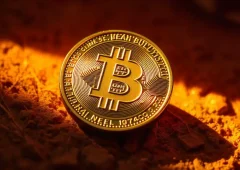Stablecoins Go Mainstream: 90% of Institutions Now Onboard or Exploring Use
17.05.2025 13:00 1 min. read Alexander Stefanov
A growing wave of financial institutions is turning to stablecoins, not just for cost-cutting—but as a cornerstone of future growth.
According to new data from digital asset firm Fireblocks, 90% of surveyed financial entities are either using or actively preparing to deploy stablecoins within their operations.
The findings, based on a survey of nearly 300 executives from traditional banks, fintechs, and payment platforms, suggest that the digital finance landscape is shifting from experimentation to execution.
Nearly half of respondents said they’re already using stablecoins for payments, while others are piloting or planning implementation. Only a small minority—just 10%—remain on the sidelines.
Legacy payment rails are falling short in the globalized economy, and traditional banks appear to be taking stablecoins seriously as an upgrade. The report highlights that 58% of banks are leveraging these digital assets for cross-border transfers, with others using them for payment acceptance, liquidity optimization, and merchant settlements.
Because stablecoins are pegged to fiat currencies, banks see them as easy to slot into existing treasury infrastructure without overhauling backend systems. Fireblocks described them as a “path to modernization” and a potential tool for regaining ground lost to agile fintech rivals.
-
1
Whale Activity Alert: Which Altcoins Saw Millions Flow Into Exchanges?
09.07.2025 9:00 2 min. read -
2
Bitcoin Rises as Thousands of Altcoins Disappear
07.07.2025 13:00 2 min. read -
3
Binance Launches New Airdrop Rewards for BNB Holders
09.07.2025 18:00 2 min. read -
4
Ethereum nears key resistance as analysts predict $3,500 surge
13.07.2025 20:00 2 min. read -
5
Here is How Ethereum Can Change Wall Street, According to ETH Co-founder
09.07.2025 10:00 2 min. read
Coinbase Brings Perpetual Futures to U.S. Traders Under CFTC Regulation
In a landmark move for American crypto traders, Coinbase has announced the launch of CFTC-regulated perpetual futures through Coinbase Financial Markets (CFM).
Western Union Explores Stablecoin Integration After GENIUS Act Approval
Western Union is eyeing stablecoins as the next frontier in global payments, signaling a shift toward digital assets following the passage of the GENIUS Act.
Solana Reclaims $200 as Short Squeeze, ETF hopes, and Institutional Flows Collide
Solana surged 5.6% to reclaim the $200 level for the first time since February, fueled by a confluence of bullish technical, fundamental, and institutional catalysts.
JPMorgan Eyes Crypto-backed Loans Amid Favorable U.S. Policy Shift
JPMorgan is preparing to deepen its involvement in the digital asset space by offering crypto-backed loans, according to a new report from the Financial Times.
-
1
Whale Activity Alert: Which Altcoins Saw Millions Flow Into Exchanges?
09.07.2025 9:00 2 min. read -
2
Bitcoin Rises as Thousands of Altcoins Disappear
07.07.2025 13:00 2 min. read -
3
Binance Launches New Airdrop Rewards for BNB Holders
09.07.2025 18:00 2 min. read -
4
Ethereum nears key resistance as analysts predict $3,500 surge
13.07.2025 20:00 2 min. read -
5
Here is How Ethereum Can Change Wall Street, According to ETH Co-founder
09.07.2025 10:00 2 min. read


